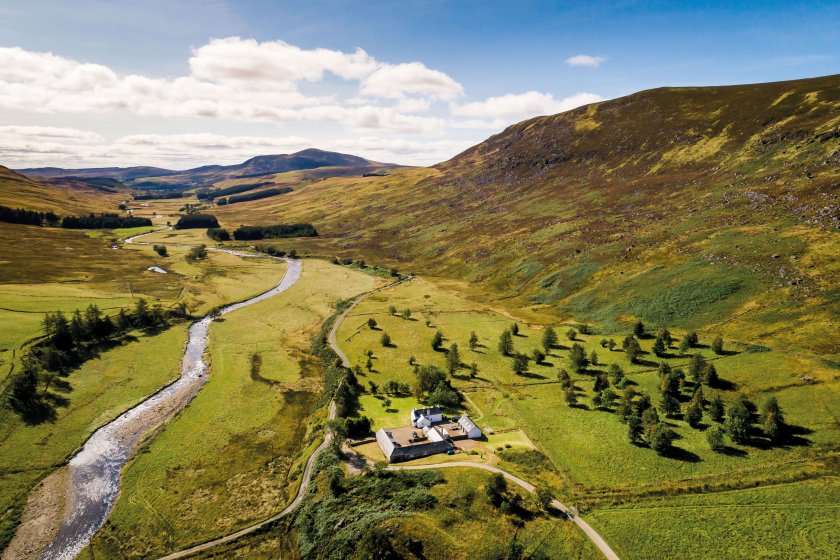
Demand for land for natural capital and rewilding is boosting the market for Scottish estates, according to rural property consultancy Galbraith.
The increased variety of motivations for acquiring an upland estate has stimulated the market further which was already benefiting from the booming forestry sector.
The firm says it has sold and bought estates valued in excess of £50 million over the last two years.
Demand outstrips supply by a considerable margin, as only around 15 estates will change hands in a typical year.
Average prices are increasing, alongside significant premiums being paid for hill farms and planting land.
Emma Chalmers, Partner of Galbraith said: “The interesting change is there is now a range of buyers with a variety of interests.
"No longer are the buyers just interested in the more traditional sports of grouse shooting, stalking, fishing and low ground shooting."
The sales of Glenlochay Estate in Stirlingshire and Auchavan Estate in Angus, sold in 2019 and 2020 respectively, both prompted a number of natural capital buyers to come forward alongside those who were primarily interested in traditional pursuits.
However, the sale of Kinrara Estate earlier this year saw the majority of potential buyers with interests in woodland creation and natural capital above all else.
Ms Chalmers said: "This was further experienced when a stock farm was marketed and sold privately, also earlier this year, with a natural capital buyer secured. Thus, demonstrating the changing nature of the market.”
Galbraith reports that buyers include corporations, institutions and investment houses, as well as private individuals with a variety of motivations and interests.
Private sales have increased considerably as a percentage of the overall market.
Ms Chalmers continued: “The Scottish estate has always been sought after, formerly principally driven by interest in traditional sports, together with the desire to ‘get away from it all’.
"Demand has always outstripped supply, with only about 10 to 15 estates offered for sale each year, either privately or on the open market.
“However, we are seeing with the accelerating understanding of climate change, growing desire to offset carbon usage, both personally and by business, the need to be more visibly green or indeed by some to meet their net zero targets."
The traditional estate, together with the hill and stock farms, are attracting increased interest from this new natural capital purchaser, she said.
Some buyers look to plant well designed productive forests, others native woodlands or indeed a diverse mixture of both, with the newer peatland restoration also now coming into the mix.
"However Natural Capital isn’t meaning the ceasing of the traditional sports as there are many buyers who look to retain some or all of the sport whilst introducing or expanding natural capital elements," Ms Chalmers said.
“Now, we have demand from buyers motivated by woodland creation, habitat restoration, traditional sports, together with other opportunities with the potential to generate an income such as installing a hydro scheme, wind turbines or perhaps creating a distillery, holiday lets or a wedding venue.
Land is being acquired by businesses to offset carbon emissions whilst providing a financial return from other parts of the estate.”
The average price for a Scottish estate continues to rise. Hill ground, until recently priced in the region of £600 to £800 per acre, can now see that figure more than double, particularly where natural capital potential exists.
With increased demand and more closing dates this has successfully helped drive sale prices to their maximum achievable level.
